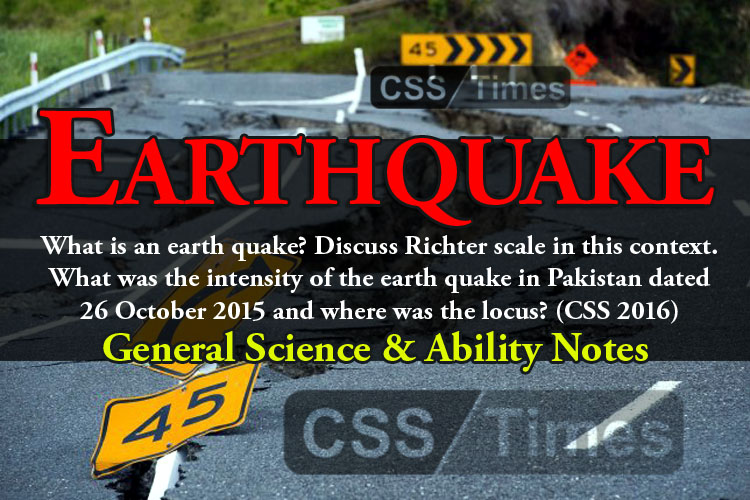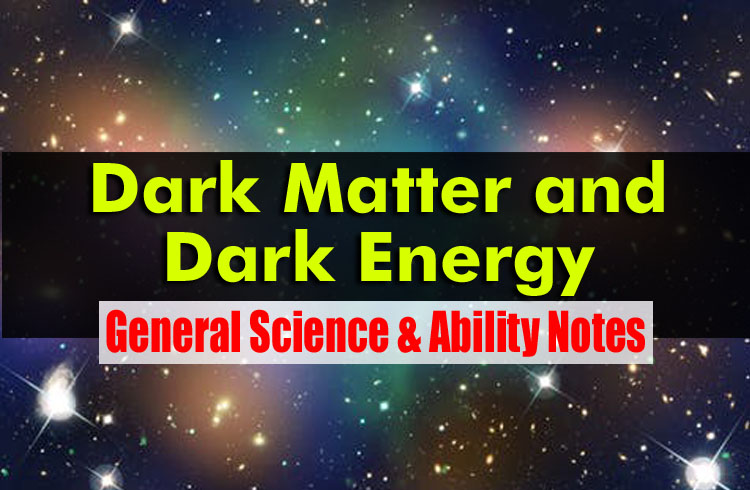General Science & Ability Notes | What is Earthquake?
(CSS 1989, 1998, 2008, 2012)
Q: What is an earth quake? Discuss Richter scale in this context. What was the intensity of the earth quake in Pakistan dated 26 October 2015 and where was the locus? (CSS 2016)
Earthquake
Earthquake shaking of the Earth’s surface caused by rapid movement of the Earth’s rocky outer layer. Earthquakes occur when energy stored within the Earth, usually in the form of strain in rocks, suddenly releases. This energy is transmitted to the surface of the Earth by earthquake waves. The study of earthquakes and the waves they create is called Seismology (from the Greek seismos, “to shake”). Scientists who study earthquakes are called seismologists.





